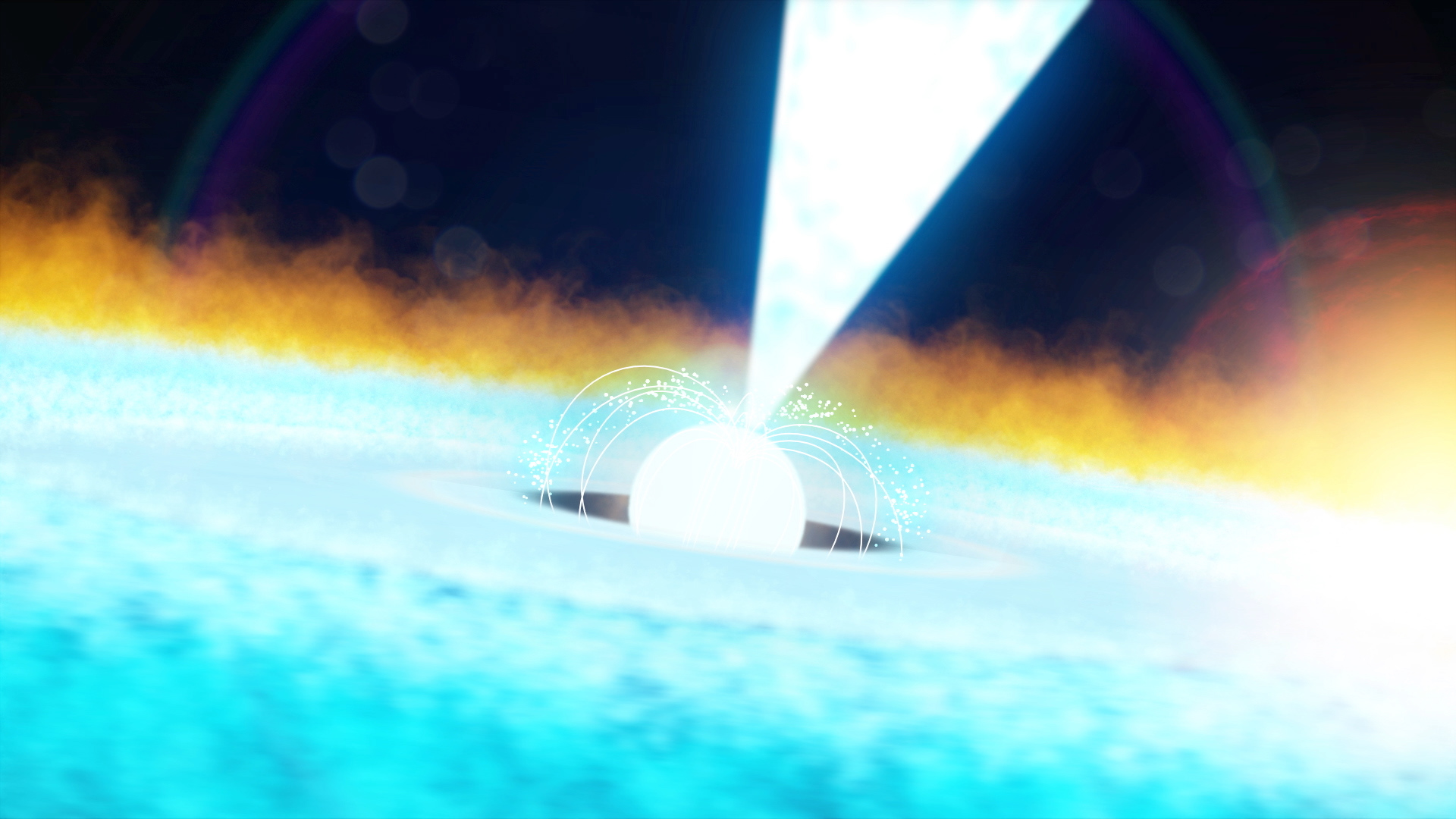First-of-Its-Kind Neutron Star Flashes Bizarre 'Cyclotron Line' at Earth
Neutron stars have never been caught behaving this way before.

A twisted little neutron star devoured chunks of its stellar twin, revealing a never-before-seen phenomenon to scientists watching on Earth.
Unlike most objects in space (including other neutron stars and planet Earth), neutron star GRO J2058+42 doesn't have two simple magnetic poles at its north and south ends. Instead, it has a distorted magnetic field, with warped regions of intense magnetism sprinkled across the object's surface.
The celestial object was discovered in 1995, when it had a big outburst, but since then, it had been in a "quiet state," which concealed the star's twisted magnetic field. But in March, the object lit up again as it consumed a big chunk of matter from its twin, a regular star. That's according to a paper from an international team of scientists, published Sept. 18 in The Astrophysical Journal Letters.
Related: 8 Ways You Can See Einstein’s Theory of Relativity in Real Life
After black holes, neutron stars are the densest known objects in the universe. Though the objects' internal physics are poorly understood, researchers know that neutron stars form from the dense cores of ancient stars that go supernova. Scientists also know that these objects are often as heavy and bright as normal stars but only about as wide as a small city. Often, as in the case of this neutron star, the ones we can see from Earth are paired up with normal stars and suck columns of matter off their companions' surfaces. Neutron stars often spin quite fast and regularly, and researchers study the objects by measuring their brightening and dimming and the particular frequencies of light they emit.
Sometimes, those frequencies include a "cyclotron line," a feature in the light coming from the star that suggests the presence of a powerful magnetic field, researchers in the new study wrote in a statement. Typically, the neutron stars fall into one of two categories: neutron stars with no cyclotron line and neutron stars with a steady, even cyclotron line caused by a magnetic field with two poles.
This star is different. When it lit up again in March, NASA quickly focused the Nuclear Spectroscopic Telescope Array (NuSTAR) on the light source, and this instrument discovered the cyclotron line, the authors wrote in the paper. But this line was present only 10% of the time. That suggests that something bizarre is going on with GRO J2058+42's magnetic fields. The star's field is pointing at Earth for only a tenth of its 3-minute, 16-second rotation period.
Get the world’s most fascinating discoveries delivered straight to your inbox.
It's difficult to explain why this neutron star has this property, the authors wrote, in part because the data have a number of complicating factors. The gravitational fields around the neutron star are so intense, for example, that most of the X-rays we can see from Earth are actually coming from the far side of the star. As they leave the star's surface, the object's gravity bends their path through space until they're pointed at Earth. That and other issues make it especially difficult to disentangle the data here and figure out precisely what's going on, the authors wrote.
There are similar magnetic anomalies on our own star, the authors noted in the statement. Sunspots are, in fact, regions where magnetic fields have gotten tangled up in a way that's likely similar to what's happening here. But the effect of such spots is far less dramatic, and they have less of an impact on the whole star.
- The 18 Biggest Unsolved Mysteries in Physics
- The Large Numbers That Define the Universe
- Twisted Physics: 7 Mind-Blowing Findings
Originally published on Live Science.


